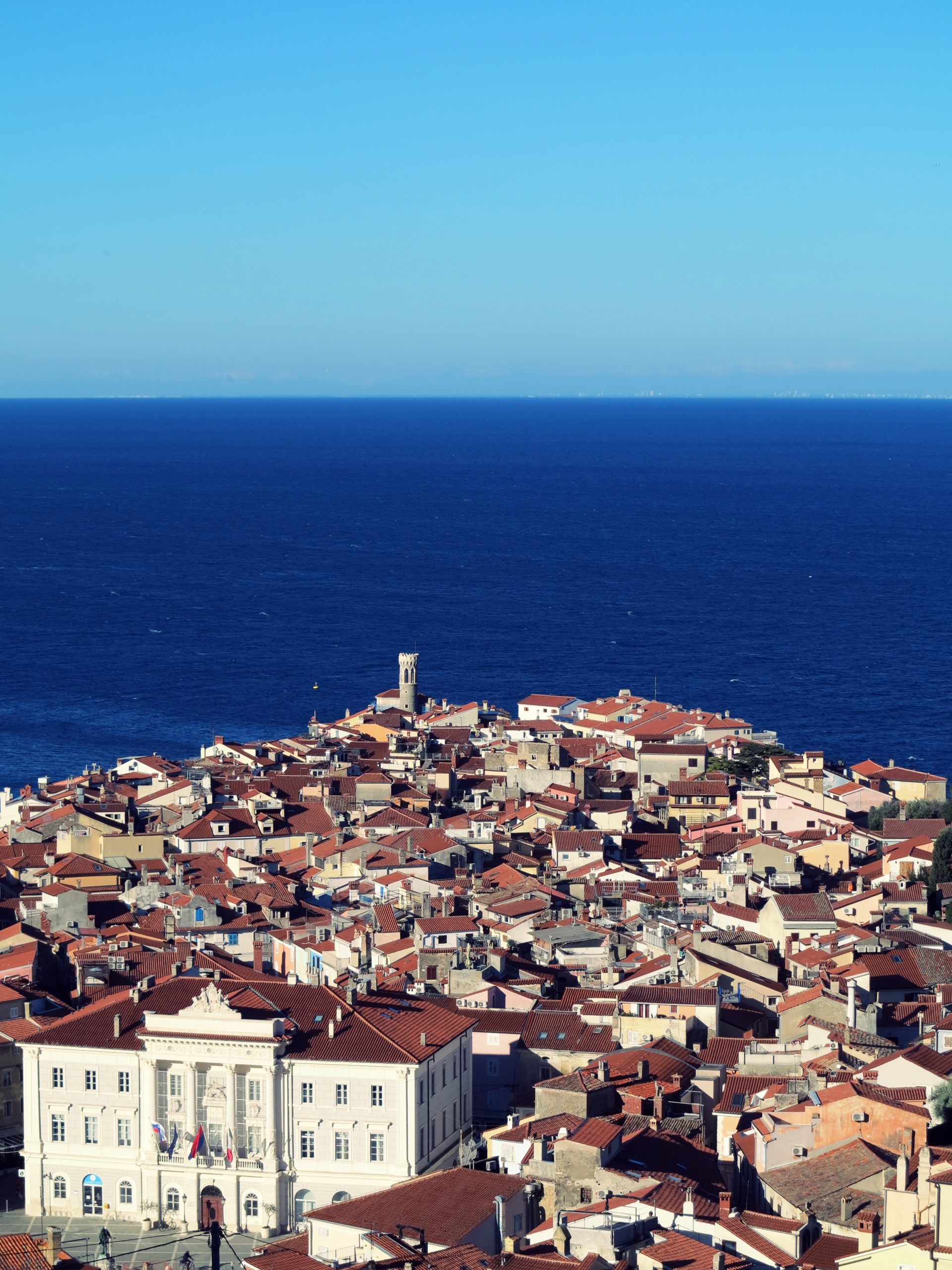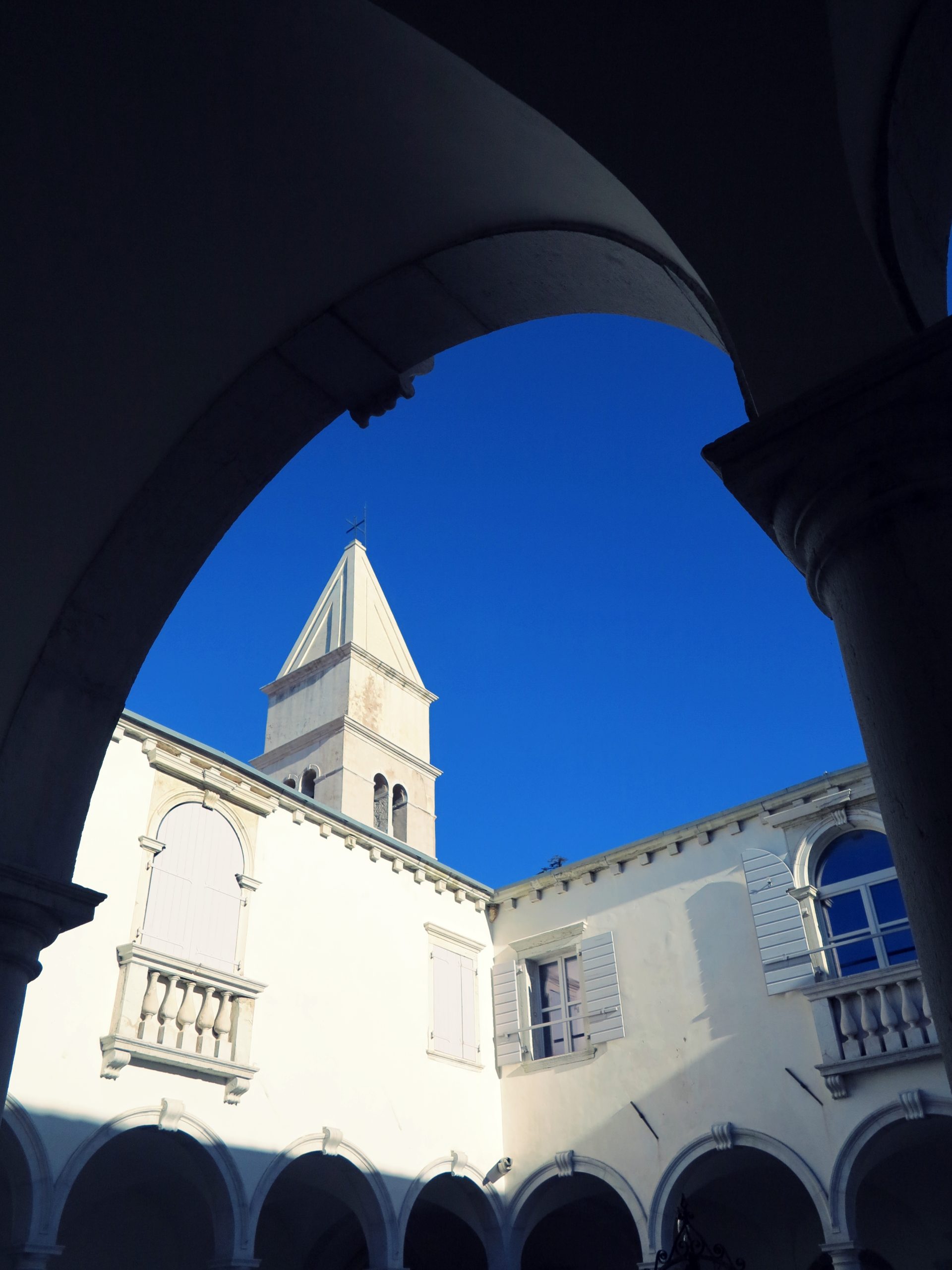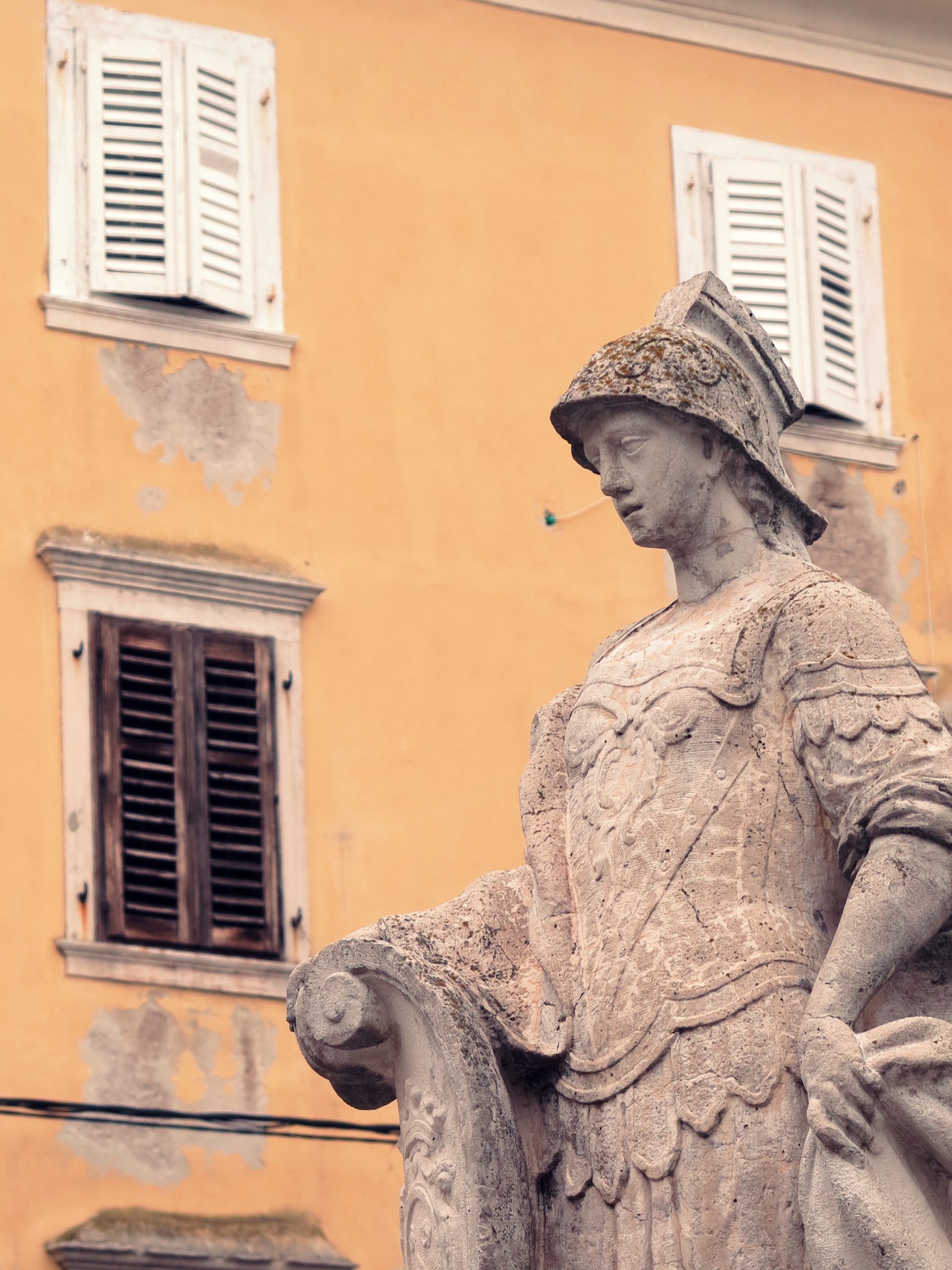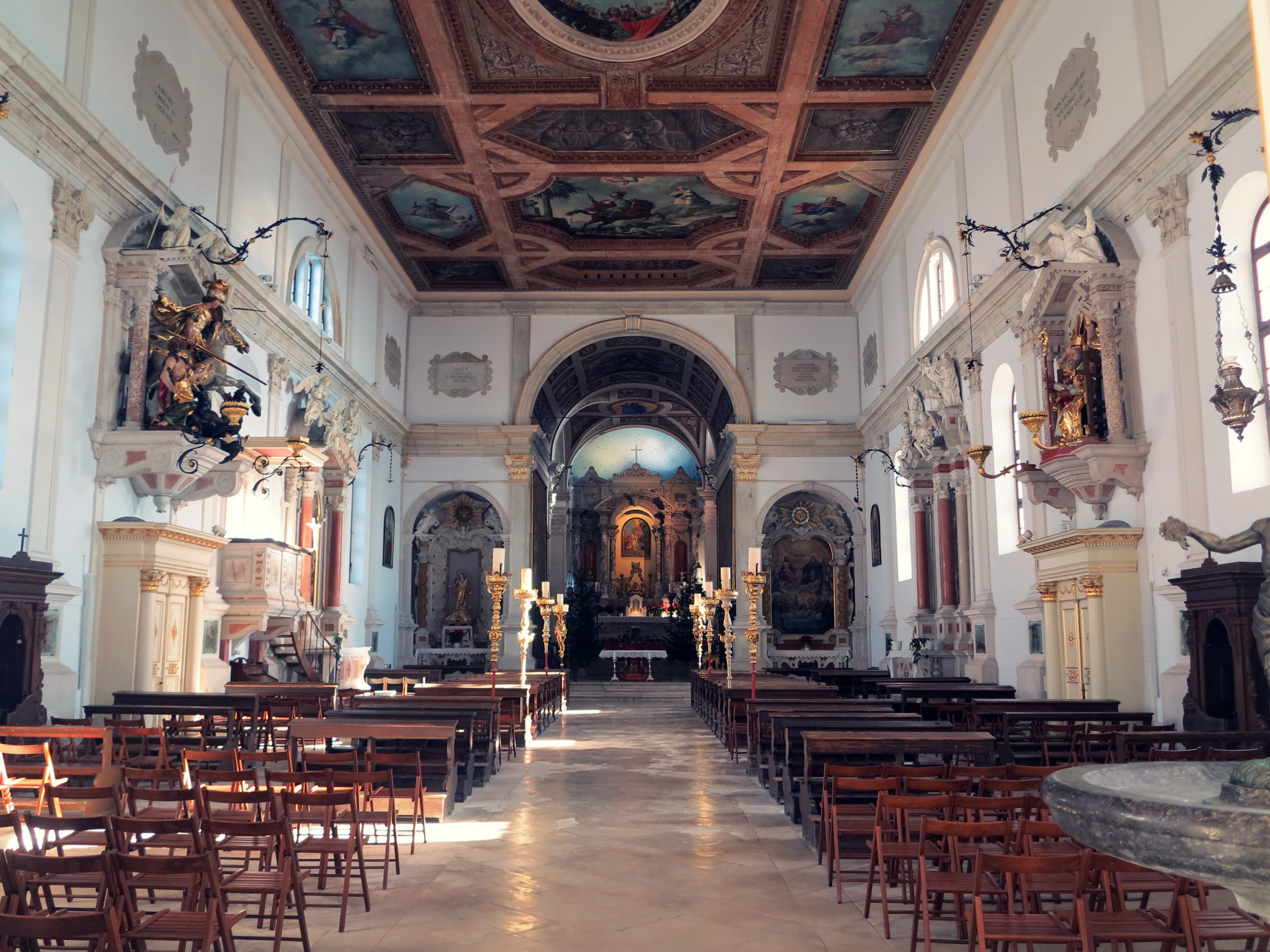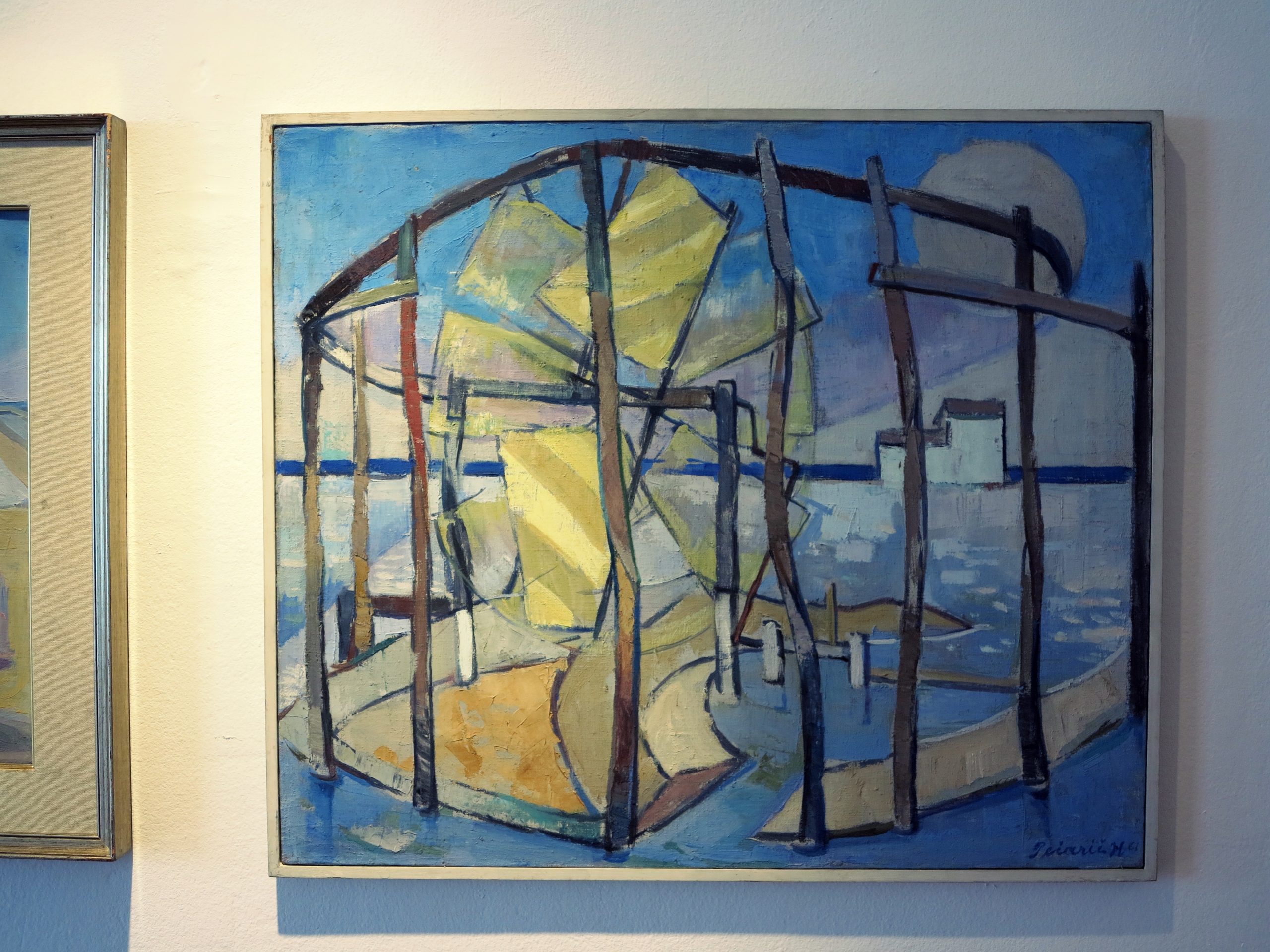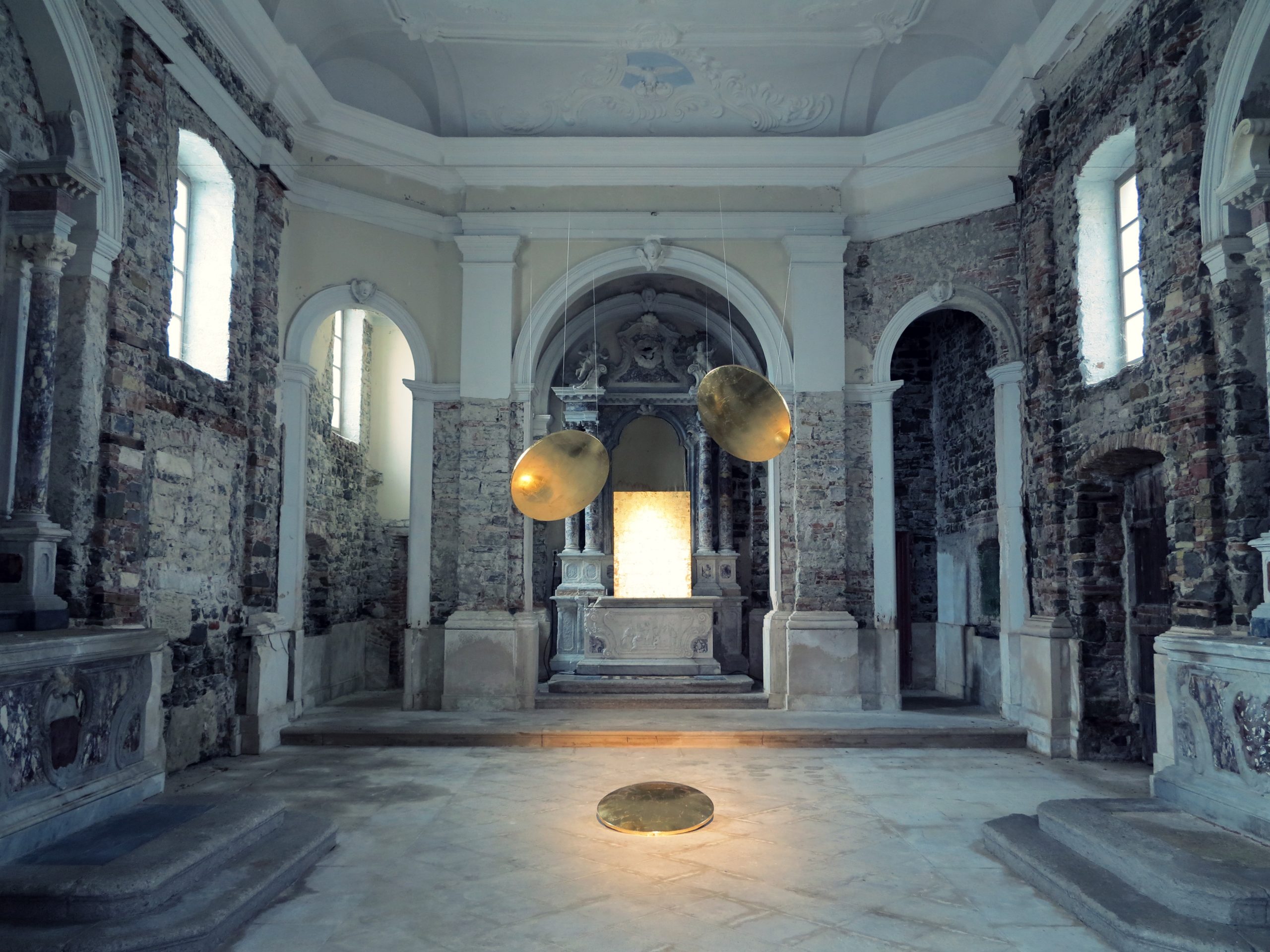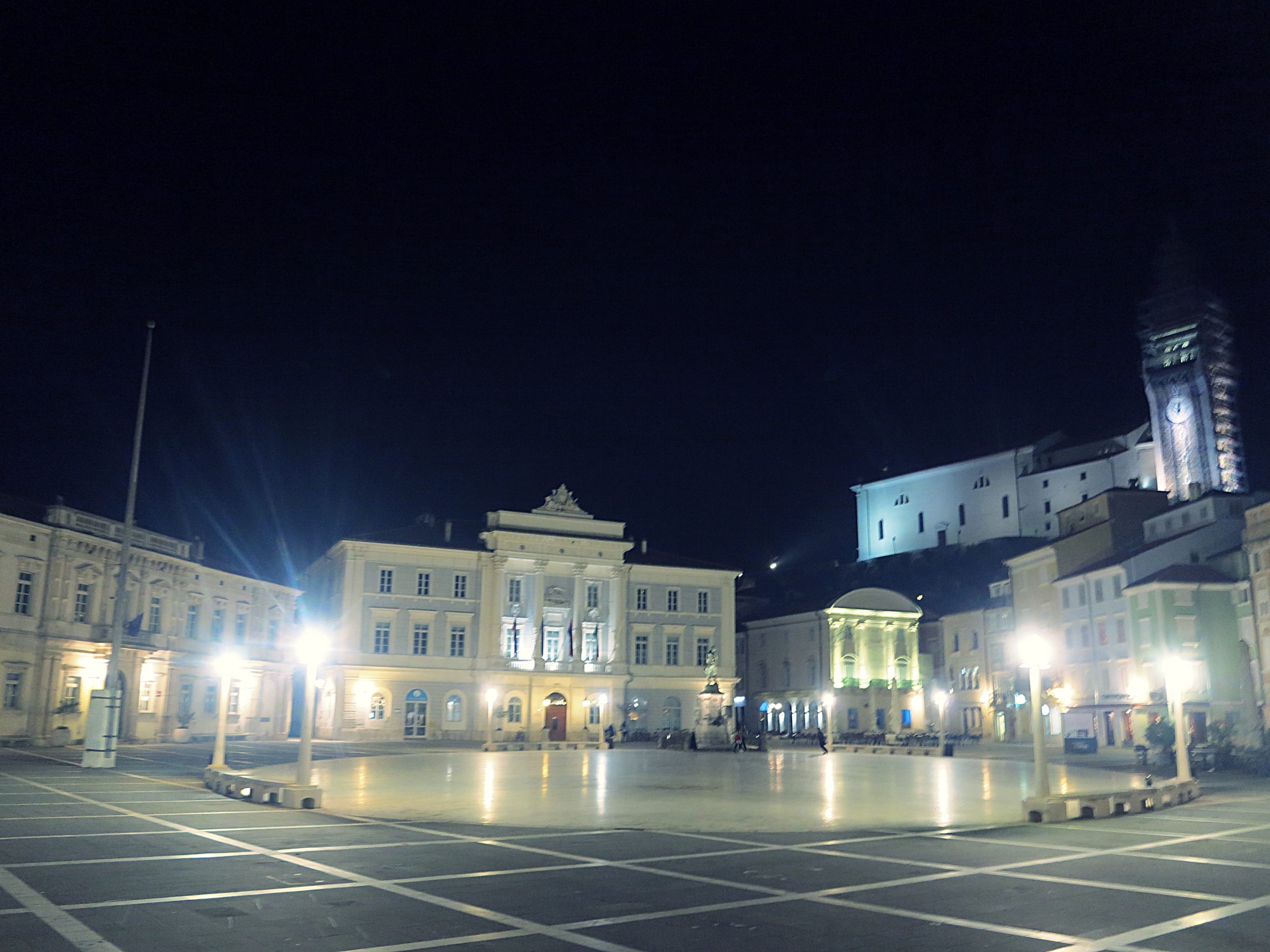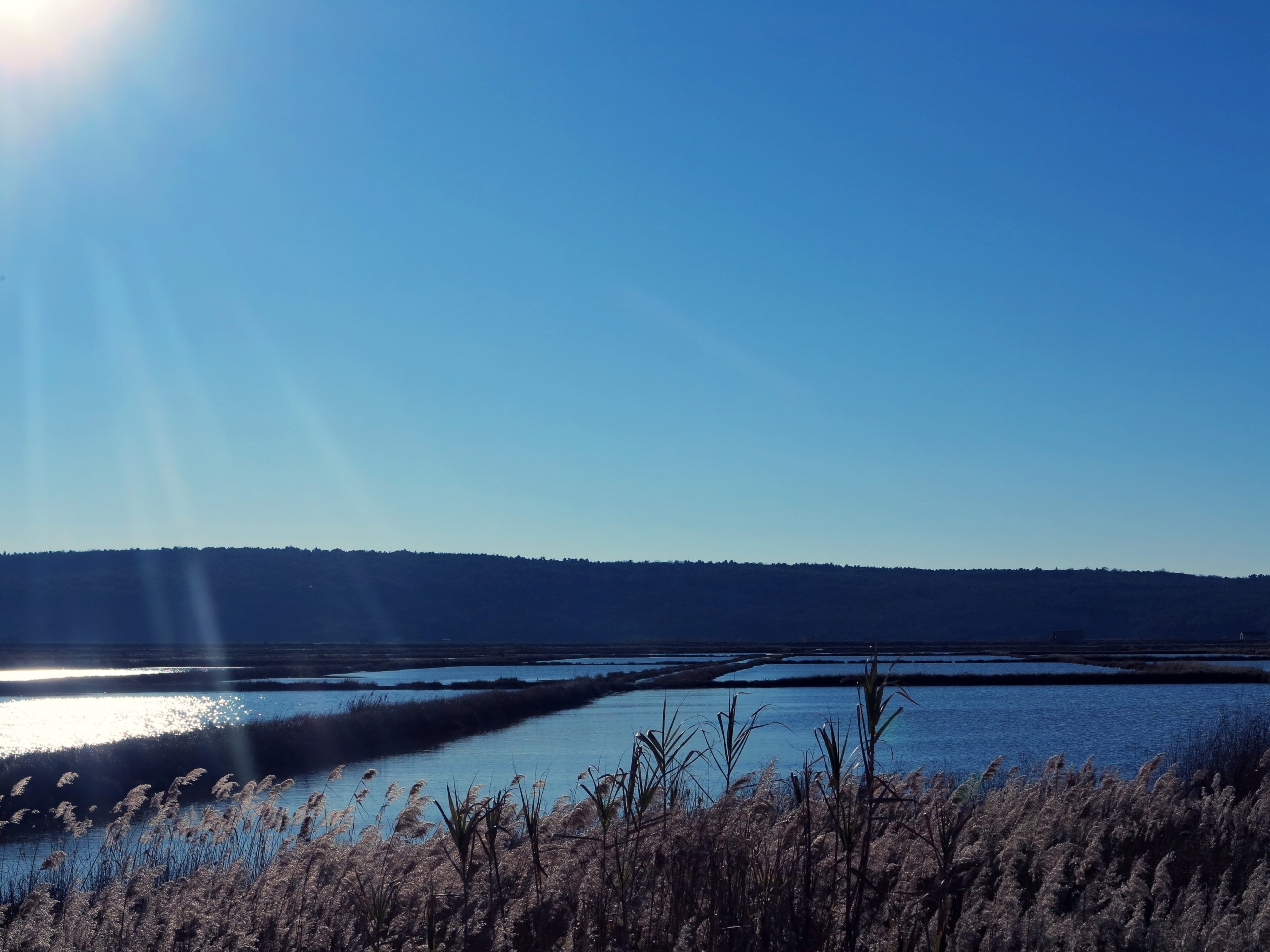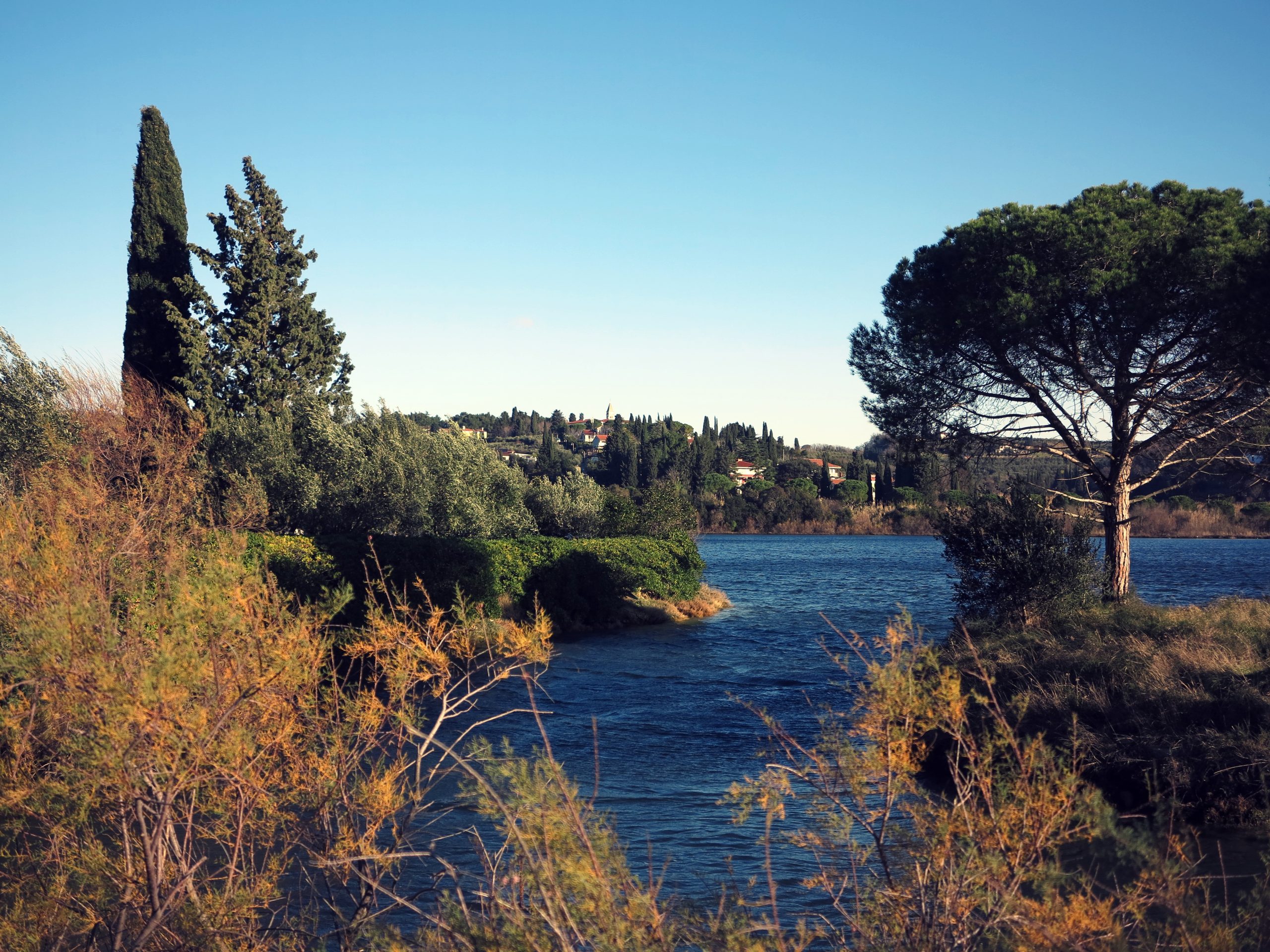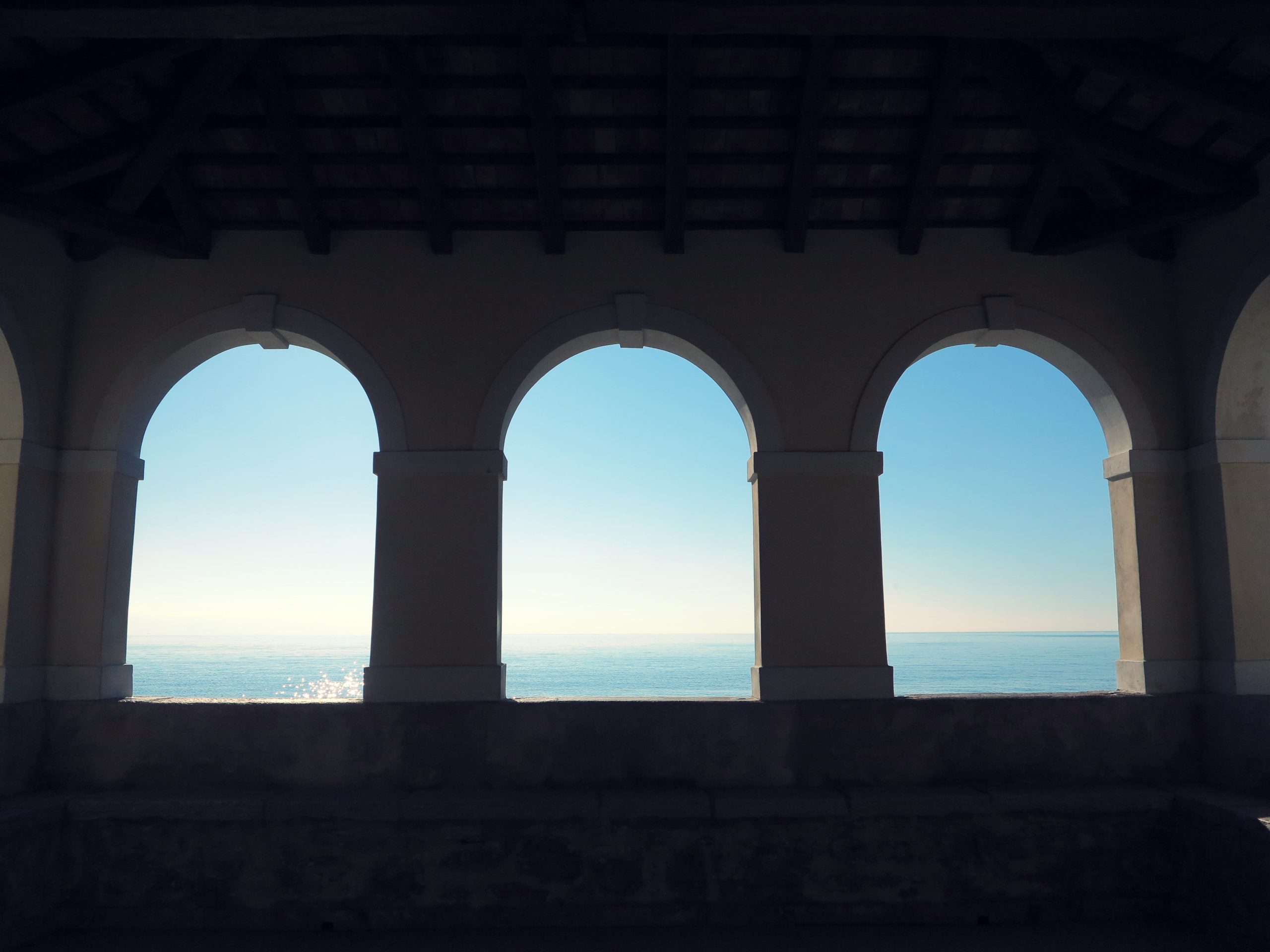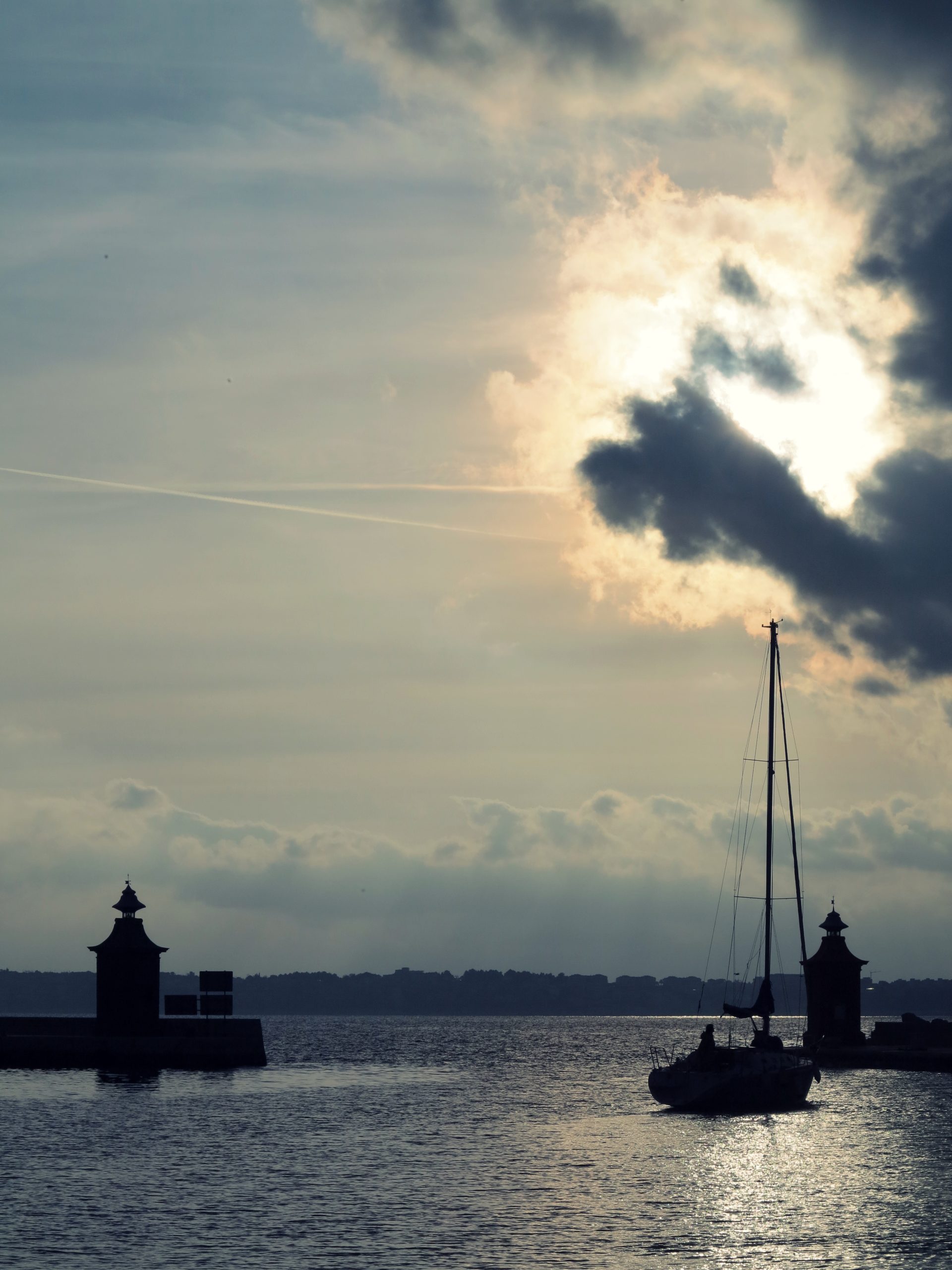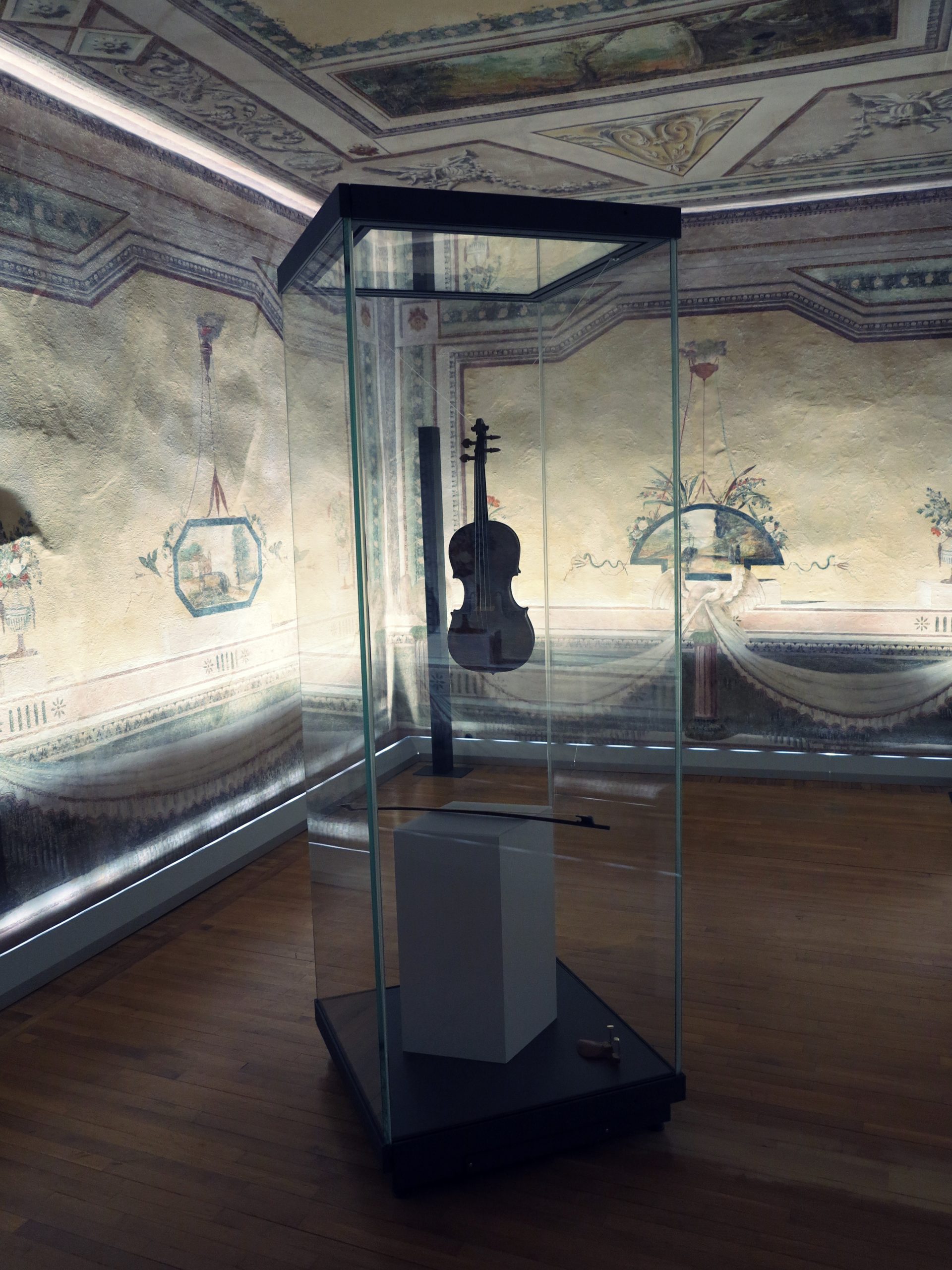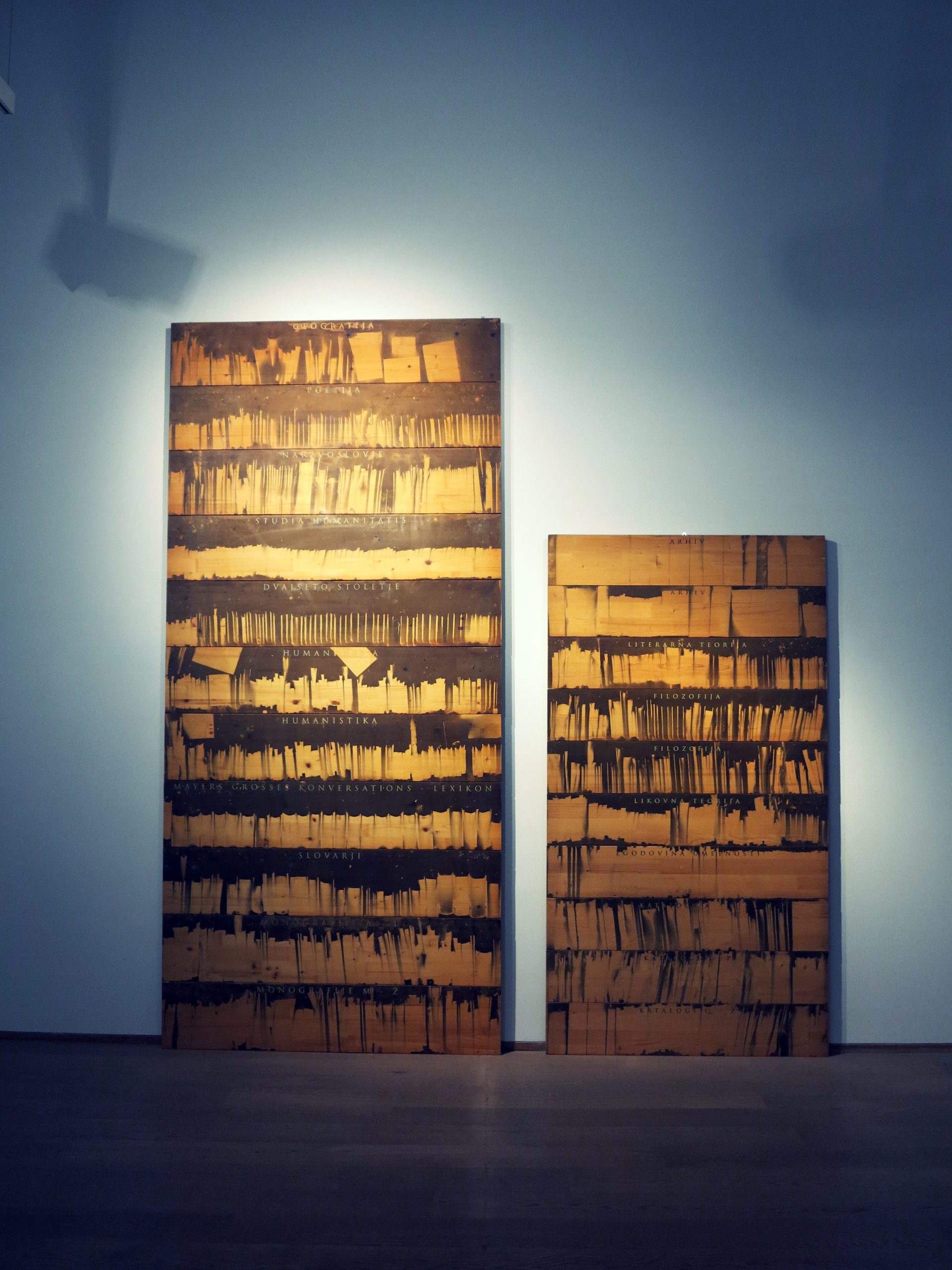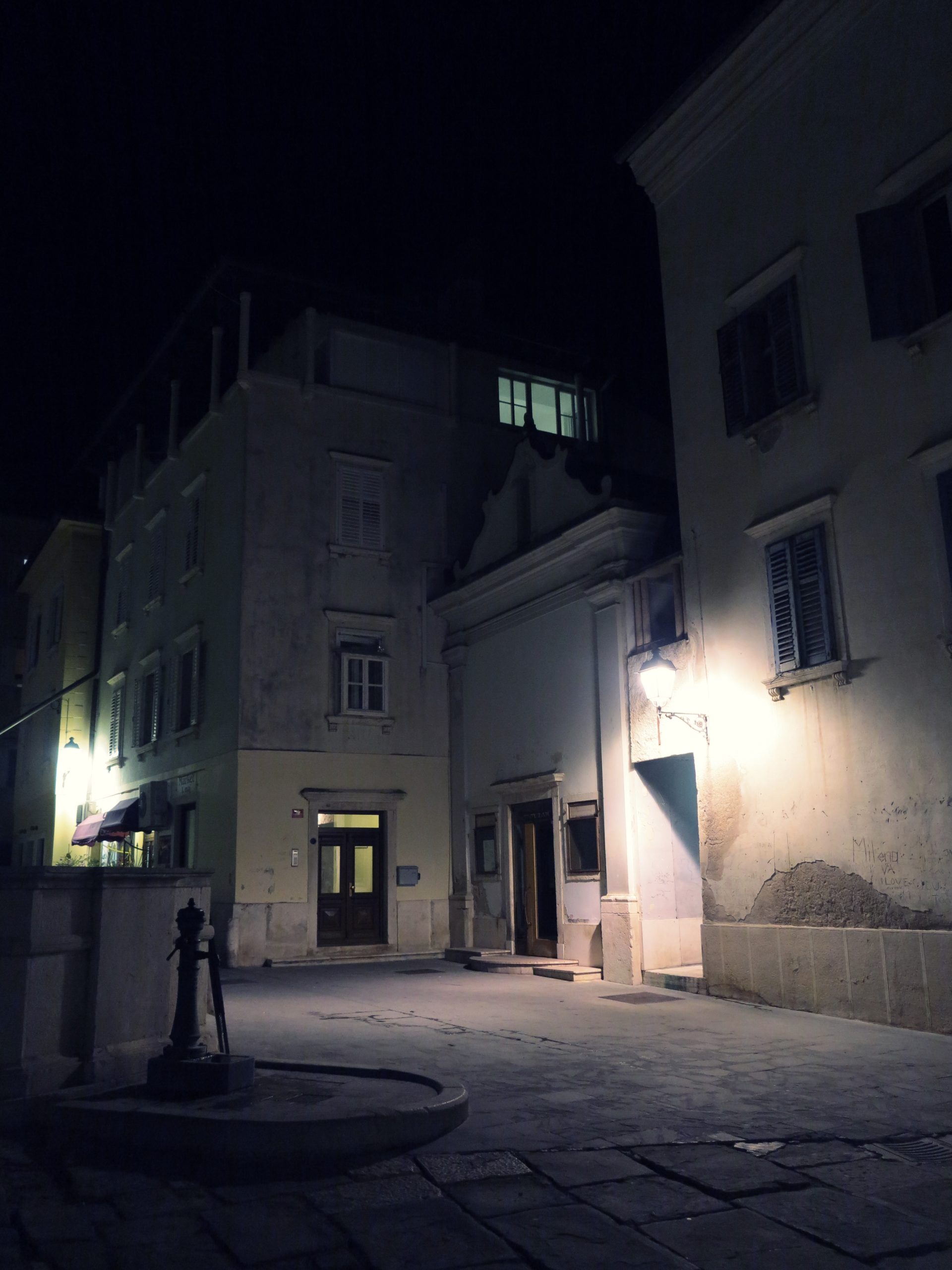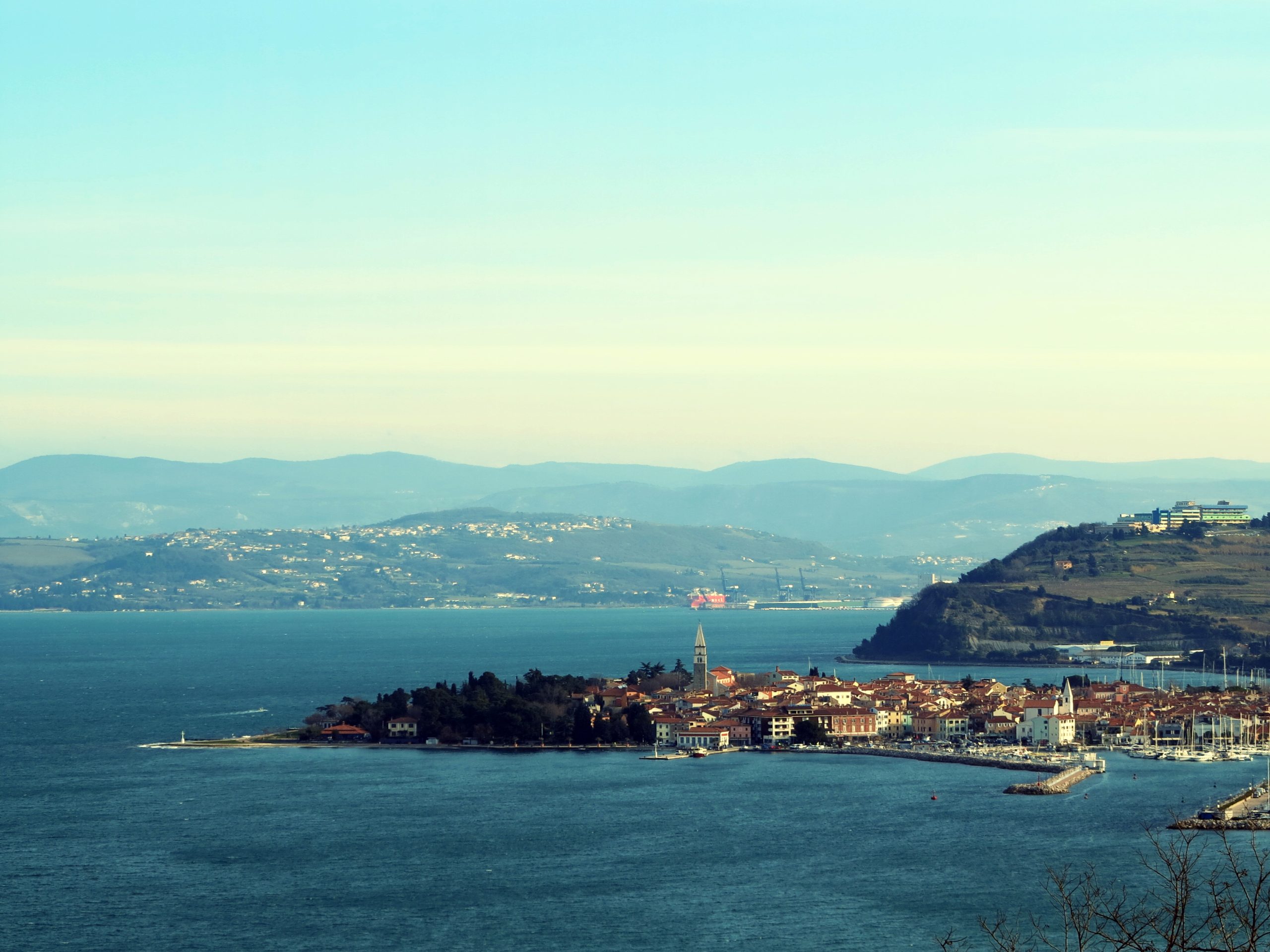Between the years, it starts – by car to the Slovenian Adriatic. The path leads over the A3, which we leave in Vilshofen on the Danube. Far away from the hustle and bustle of New Year’s Eve, our first stopover: in the middle of the friendly, historic center of the small spa town of Bad Birnbach in the Rottal in Lower Bavaria. The hot springs and the beautiful sauna landscapes lure us. We enjoy it for four days, but soon we move on, further towards the sea.
We cross Austria quickly, perhaps too quickly. We have only just left southern Carinthia, Spittal an der Drau and the Villach region behind us, and we are already in Slovenia, in the climatic health resort of Bled on Lake Bled. Bled has only 5,000 inhabitants, but it has a long history. From 1804 to 1918, Bled belonged to the Habsburg Empire of Austria – to this day, the connection to Carinthia is close in many ways. The former summer residence of the Yugoslav royal family, Tito also had a villa here, is now a fully developed tourist highlight of the small, culturally fascinating state of Slovenia with its two million inhabitants – last year, as is well known, the guest of honour at the Frankfurt Book Fair. And Bled has a special landmark: St. Mary’s Church on a small island in the middle of the lake. Even in winter, it is worth taking a trip with a “pletna”, the traditional local wooden boat. The whole scenery continues the loveliness of Carinthia: the castle on the rock above Lake Bled attracts many tourists on this bright New Year’s Day. The castle museum is also open in winter. From here you have a great view over the lake – which you can walk around – and the snow-covered Karawanks, which we had crossed shortly before in the motorway tunnel. We recommend a snack or even an overnight stay at the Hotel Stari Farovž with its simple, beautiful rooms in the old rectory – one of the oldest buildings in the city (https://www.blejskiotok.si/en/hotel-the-old-rectory/).
The next morning: scrape the car windows free! It’s winter here. But now it’s off to Piran. To the sea. Not even a two-hour drive before the alpine landscape has become a Mediterranean one – even if the snow-capped Alpine chain can still be seen, depending on the weather. “Pirano” is the Italian name for Piran. Border area: Italy, but also Croatia are very close. The official languages in Piran are Slovenian and Italian. The city has 18,000 inhabitants. However, far fewer live in the historic center. Today, January 2nd, the city is well attended. Many Italians and Austrians spend their Christmas holidays here, even if the weather is not so good today: it is cool, only in the afternoon does the sun show its power.
From the 13th to the 18th century, Piran belonged to the Republic of Venice, as did the neighbouring towns of Koper and Izola. Gothic pointed arches, small squares, the coloured facades. The Lion of St. Mark adorns many a palace: the Venetian influence is architecturally unmistakable in this city, which has an extremely graceful location. The Yugoslav author Ciril Kosmač, who died in 1980, describes it this way: “Like the bow of a huge pirate ship, it cut through the surging sea and I sat on the top of the hill as if on a high mast and rode along.”
The Slovenian coastal strip on the Adriatic Sea is less than 47 kilometres long. The old town of Pirano is located on a promontory on the Gulf of Trieste. The city was first mentioned in writing in the 7th century. Greeks, Romans, Illyrians, the Franks, the Venetians, briefly the French under General Bonaparte, then the Habsburgs – they have all left their mark here. The most famous son of the city is the violinist, composer and innovator of violin playing Giuseppe Tartini, born in 1692, whose monument stands on the main square named after him, the Tartinijev trg. The bronze statue from the late 19th century can be seen with a glass of white Malvazija or red Refošk – some cafés that are still open in winter invite you to linger all around.
Just a few steps away is the house where Giuseppe Tartini was born. Today, the newly renovated Casa Pizagrua houses a small museum. This palazzo is also home to the Communità Italiana di Pirano, which regularly hosts cultural events and concerts. There is also an unusually beautiful place for fine arts in Piran, namely the Obalne Galerije Piran – the City Gallery – where works by the artist Aleš Sedmak, born in Postojna in 1952 and studying at the Academy of Fine Arts in Ljubljana (https://www.obalne-galerije.si), are currently on display. In Piran, he exhibits paintings, prints, drawings and natural history illustrations in various techniques.
Piran impresses with its combination of Alpine and Mediterranean culture. Hardly any more beautiful place by the sea can be reached so quickly from southern Germany and Austria. Imperial Austria brought prosperity to the fisherman’s nest – especially through the revival of the Sečovlje salt pans nearby. The whole old town is worth seeing, including the narrow streets in the second and third row, where we moved into a beautiful apartment with a very sympathetic landlord couple. Nearby there are small shops, a bakery, the traditional vegetable market – you quickly immerse yourself in the everyday life of a small town by the sea.
The highlights from an art-historical point of view are, in addition to the walkable, panoramic city wall with its defensive towers, the seven city gates (such as the Gothic Dolfin Gate) and the Tartini Square, which was redesigned a few years ago by the architect Boris Podrecca, with its representative buildings (until the Habsburg era, the old harbour basin was still located here, which was then filled in), of course also the churches: At the Punta, the western tip of the headland, stands Sveti Klementa, and towering over the hill is the Cathedral of Sveti Jurij – the church dedicated to St. George from 1637. The Campanile, which is currently scaffolded, looks familiar. Yes, of course: it is very similar to St. Mark’s Tower in Venice, although much smaller. Its top is adorned with the statue of the city’s patron saint, Saint George. Nativity scenes are still set up in all the churches.
An architectural gem is the Minorite Monastery of St. Francis with its famous cloister, which has become known as a place for musical events. From the cloister, you can access a picture gallery with works by Venetian artists in the summer months, but it is closed in winter. Afterwards it’s time for a coffee: We drink it in the sun on the terrace of the “Caffe Neptun” at the beginning of the harbour promenade with a view of the sea. Inside, the “Neptune” has a very maritime design: you feel like you’re on board a ship.
A nice alternative is the historic “Caffe Teater”, integrated into the Tartini Theatre from 1910, which was designed by the Trieste architect Giacomo Zammattio and still serves as a venue today. Here you can sit very comfortably even on stormy days from 8 o’clock in the morning. In addition, the bar is open until 12 p.m. The terrace overlooking the harbour is magnificent: this is where Art Nouveau poster artist Josef Maria Auchentaller, who lives in Grado, on the other side of the gulf, painted his Piran paintings, two of which can be seen as reproductions in the café – along with other works by contemporary artists.
We look out at the churning sea. This morning, the Bora, the Burya, whistles particularly wildly and rattles the window panes. The downwind from the mountains: it’s dangerous. It lashes the masts and shrouds, sweeps violently over the terrace, roars over the harbour, where film history was once written. The Bohemian-born filmmaker František Čáp, who died in nearby Ankaran in 1972 and is buried in the Piran cemetery, shot his documentary “Piran” (https://www.gov.si/en/news/2022-04-01-piran-tartini-cap/) here in 1965 and a few years earlier, in 1957, the film “La ragazza della salina” with Marcello Mastroianni (https://www.youtube.com/watch?v=htBVdzemKjM). Piran and Portorož were a centre of Yugoslav cinema in the post-war period, with their own film studio in Fornače. Many international productions have also been realized here. Stars and starlets were guests, as reported in a catalogue from 2014, which is still available (https://kinoteka.si/izdelek/piran-v-filmu-koprodukcijski-casi-slovenije/).
The next stop on this windswept day is the Maritime Museum, founded in 1954 in the neoclassical Gabrielli Palace, where the city’s long maritime history is depicted through photographs, ship models, equipment and uniforms (https://pomorskimuzej.si/en/about-us). The importance of salt production for Piran and the life of the salt pan farmers is also explained. Just a few steps away, the Herman Pečarič Gallery – which is part of the Municipal Gallery – presents the work of the artist Herman Pečarič, who died in 1981, in a permanent exhibition that is constantly being rehung. Above all, the town of Piran, the surrounding area and Istria were his motifs.
In the evening, you can stop off at the traditional “Delfin” – the somewhat hidden Piran restaurant classic. Grilled fish and squid are served, along with potatoes with chard and white malvazija, followed by a palačinke, pancakes, which spread from Austria into Slavic. Just a few steps further on, you can recommend the “Fritolin pri Cantini” in the most beautiful location on Prvomajski trg, on the Square of the 1st of May, where the small, uncomplicated and rustic wine bar “Cantina Klet” is also happy to welcome guests. The two restaurants work together. The food, especially fish and seafood, can be ordered at the window of the “Fritolin pri Cantini”, it can be eaten outside on the square, but also in the “Cantina Klet”.
The next day, it is a bit foggy and quite cool, we go on a short bike ride to Portorož. Here, too, one looks into the past. Opened in 1910, the “Palace”, now operated by Kempinski, is a grand hotel: a huge building, the second largest hotel on the Adriatic at the time. Those who could afford it drove from the empire to Opatija or here, to Portorož, only a few kilometers from Piran, which can also be done on foot on the sea promenade. After the Second World War, the town celebrated a new period of splendour: the stars came and went. Josip Broz Tito liked to reside here, Marcello Mastroianni and Sophia Loren were also there.
Today, you can take a cure here and lose yourself completely in various wellness and sauna landscapes. Some hotels also open their wellness areas to external guests, such as the “Histrion St. Bernardin Resort” and the “LifeClass Hotels & Spa”. But the winter open-air bathing pleasure can also be observed from time to time: There are people here who enter the 13° cold sea with enviable serenity.
We stay on land and cycle past the hotel “Palace” and the many other hotels of the “Rose Harbour” – the meaning of the name of the place – and the marina to visit the salt pans of Sečovlje, very close to the Croatian border, where salt is mined from April to August. Even on the outskirts of Portorož, the large, historic salt warehouses stand out – one of them now houses an ice skating rink in winter. And then, on the way back, it happens again, the sun breaks out of the fog, is reflected in the Adriatic Sea – and immediately it’s different. The sun warms here even at only 8 or 9 degrees. Of course, we drink our Bela kava outside, and even more, we enjoy a lunch of squid and white wine in the sun. A recommendation, also appreciated by locals for its cheap lunch, is the Gostilna “Pinela” in the district of Lucija near the bus station.
The next day it’s time to get on the bikes. The destination is the small town of Izola – which can be reached via Portorož on a section of the charming “Parenzana”, the “Cycle Route of Health and Friendship”, which runs along the former route of the narrow-gauge railway of the same name from Trieste in Italy to Poreč in Croatia and also leads through several tunnels. As a digital counter reveals, we are only passers-by number 14 and 15 who cross the first tunnel in this direction this morning.
But you can also reach Izola on foot: hiking trails lead there from Piran via Fiesa, first along the seaside, then on a higher coastal path, a short stretch of road, then through the salt pans of Strunjan, finally through olive groves and along the cliffs – sometimes with a great view of the whole Gulf of Trieste, even as far as Grado. Be sure to ask the tourist information office about the various, well-signposted hiking routes in the area – there is a leaflet.
Almost no tourists are here in Izola at this time of year. “Almost no guests at all,” complains the landlord – multilingual, like many locals, they speak not only Italian and German, but mostly also fluent English – of the cozy Gostilna “Ribič”, where you can sit right next to the fireplace. Highly recommended here is the fish soup and the seafood risotto. The fishing town with its large marina and pretty old town is definitely worth a long stroll.
The same applies to Koper with its industrial harbour and winding old town. From Izola you can continue by bike to Koper – but there is also a very cheap bus service from Piran to both places. We take the bus the next day – and soon find ourselves on the central square, the Titov trg. Tito Square offers art-historical significance, especially the Praetor’s Palace with its crenellated crown and the Loggia Palace from the 15th century, where a coffee house was opened in the middle of the 19th century. There is no more stylish way to drink your coffee in Koper, thought the French poet Stendhal, who was a guest here. Another very nice place to enjoy the winter sun is the café at the marina, the “Kavarna Cappuccino Kroštola”. The Italian municipality of Kopers, the Comunità Italiana Capodistria, also runs a café in a courtyard that is worth a stop. The Koper Regional Museum, founded in 1911, is also very close. It is located in the 17th-century Belgramoni Tacco palace and shows the history of the city and Slovenian Istria.
Back in Piran, you can walk up Grudnova Street to a panoramic path that offers a fantastic view over the Punta and the harbour. It’s late afternoon. The sun is setting – it immediately gets chilly. It is such contrasts that make winter in the northern Adriatic so rewarding.
Later in the evening, we return to the labyrinth of the old town, some of which stretches far up the mountain. Not in size, but in charm, the city, surrounded by cypresses and pines, olive groves and vineyards, rivals Venice. The splendour of the city by the sea, which is still illuminated for Christmas, fascinates again and again. It has now become completely dark, on to the lighthouse at the end of the Punta: the black Adriatic Sea gurgles against the shore, this sea, “today calm as a pond, tomorrow a monster”, as the Carinthian Peter Handke wrote in “My Year in No Man’s Bay”. Handke was a frequent guest in Piran.
On the other side, Trieste shines, the city of the author, translator and convinced Central European Claudio Magris, who described the possibilities of this border land like no other: “I was born and raised in Trieste, on a border, in a place that is sometimes a jewel because it offers the opportunity to discover the complex and mixed character of each identity,” says Magris. Again and again, Magris emphasized the “value of the mixed and multi-layered worlds”.
Here, at the meeting of the Slavic, Slovenian, Croatian, Venetian-Italian, Austrian-German and Hungarian worlds, national borders can be left behind wonderfully quickly. We have already paid a short visit to the Croatian towns near the border, were by car in the coastal towns of Umag and Novigrad and in the mountain villages of Buje and Grožnjan in the hinterland. Tomorrow or the day after tomorrow or whenever, we want to take the bus over to Trieste to have a coffee at the “San Marco”. Opened in 1914, the café once hosted Italo Svevo, James Joyce, Umberto Saba, Giani Stuparich, Giorgio Voghera, as well as Fulvio Tomizza and Claudio Magris. Then maybe further into the Karst, to Miramar Castle, to Grado. Ma questa è un’altra storia …
First of all, we stay in Slovenia and think about this country, which makes a lasting impression on us. There is hardly a country in the world in which more is read, in which more is published in proportion to the number of inhabitants. “Every rock, every tree, every shrub, every street, every one holds its own story,” wrote the Slovenian poet Srečko Kosovel, who died in 1926 – and the fascination actually stems above all from the coincidence of the various large cultural areas in this small country.
Especially now in winter, here on the northern Adriatic you can find quiet places full of stories, full of stories: a landscape of longing. And we don’t have to get on a plane for that – we can reach the Slovenian Adriatic coast from Upper or Lower Bavaria in less than five hours by car. It is an area in which borders become fluid, a model region in which one can sense the possibility of a coexistence beyond the national. The Croatian writer Predrag Matvejević, who died in 2017 and was a great mediator between the cultures of the Adriatic region, once described the Adriatic Sea as a “sea of intimate proximity” in his 1987 book “The Mediterranean”, which was unfortunately out of print. The connecting element of the sea, shipping, waves, clouds and winds, all of this can be felt in a special way – on this winter trip to the Slovenian Adriatic.
Editor’s Choice
If you can’t make it all the way to the Adriatic Sea, you can enjoy life at Lake Tegernsee !


